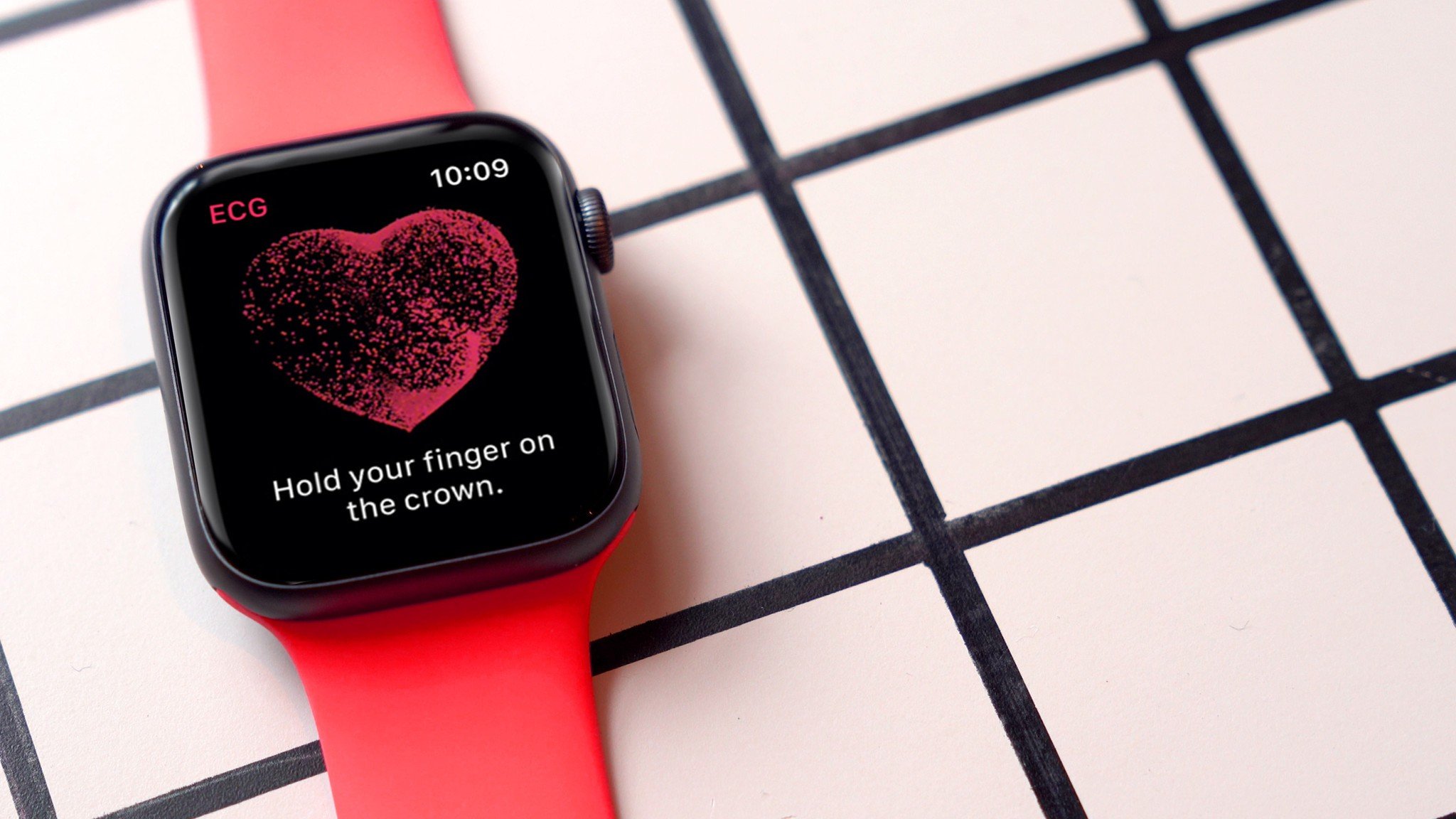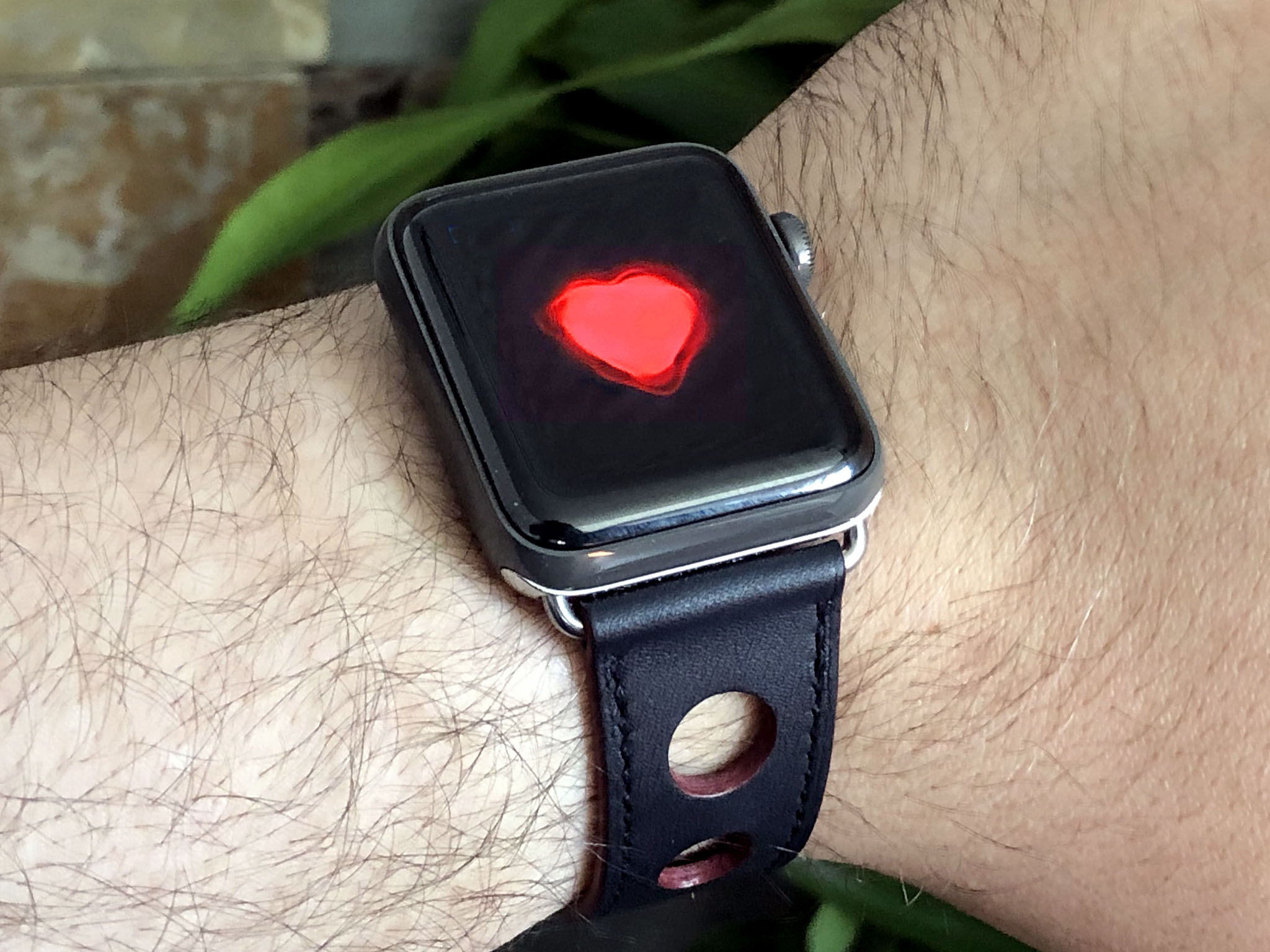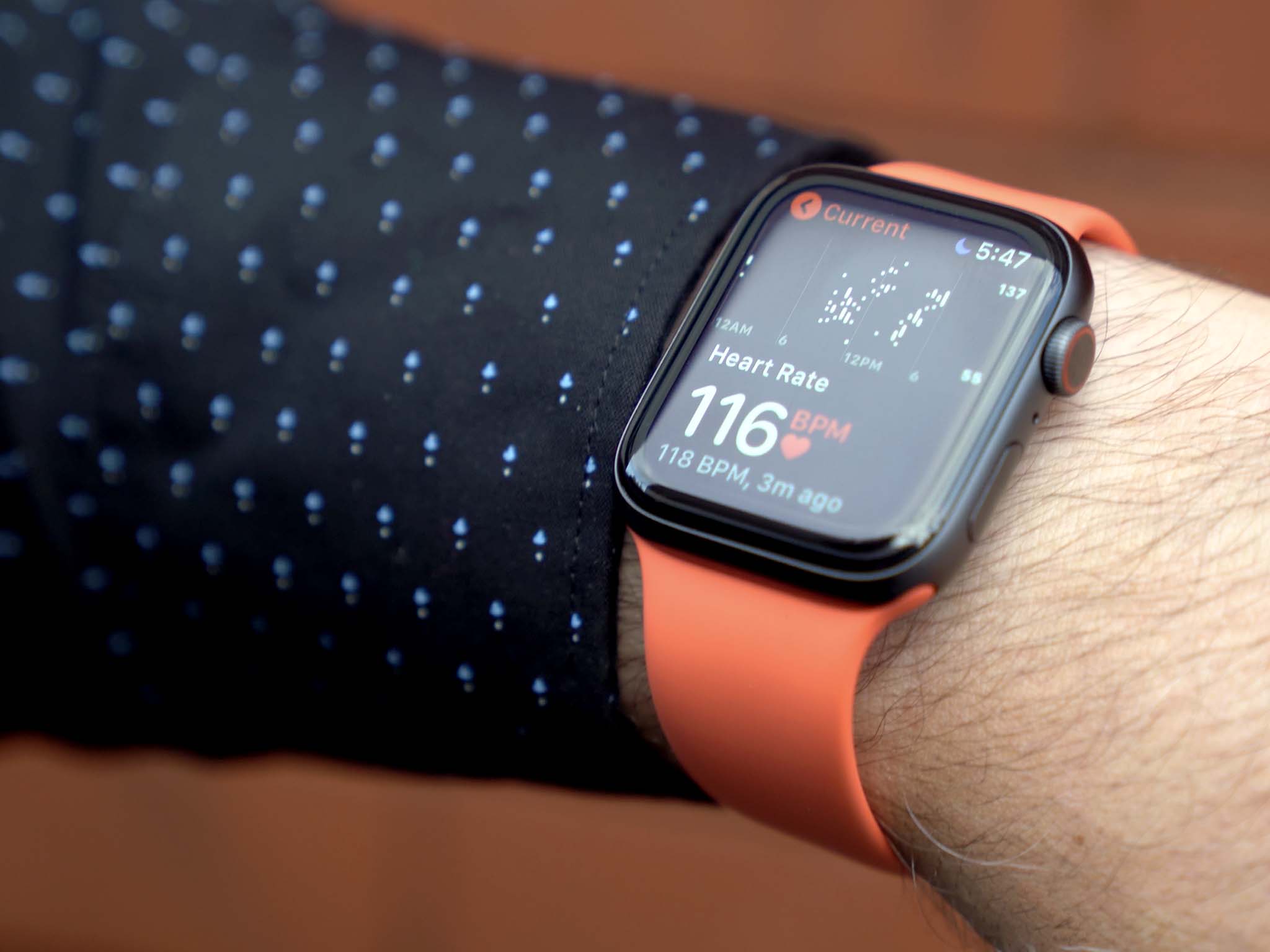Apple Watch ECG app arrives in Canada

Back in September for 2018, Apple's chief operating officer and head of Watch and Health products, Jeff Williams, took to the stage at the company's annual September event to announce Apple Watch Series 4 and its bold new edge-to-edge display. But he also announced something else: Irregular heartbeat notifications and, for the first time ever, an ECG app with the ability to take an electrocardiogram. On a watch. On your freaking wrist.
It shipped in the U.S. on December 6. It shipped in much of the E.U. and in Hong Kong on March 27. And today, it's shipping in Canada and Singapore.
"We've seen the ECG App and irregular rhythm notifications on Apple Watch have meaningful impact on our customers across the United States, Europe and Hong Kong," said Jeff Williams, Apple's chief operating officer. "We are excited to bring these features to customers in Canada, giving them access to empowering information about their heart health."
But, as always, there's a lot more to this story.
Feedback loop
The original Apple Watch had a problem: It needed a way to accurately count calories. Apple hadn't yet landed on their health-and-fitness focus for the gizmo, but they knew activity rings and workouts would be a key part of it and so that they absolutely had to nail calorie count.
So, they ended up including a heart rate monitor primarily for that purpose. They included it in the telemetry for workouts, added an app so that you could check your heart rate, and even a cute way to send your heartbeat to a loved one. But, it was mostly there to make sure those calories got counted and that move ring got filled consistently, reliably, and accurately each day, every day.
The way product development works at Apple is interesting, though. Sure, marketing tries to figure out what new features will be the most appealing and competitive each year. Individual engineers have also come up with, pitched, and driven some of the most transformative features we've gotten over the years. But, there's another huge contributor to Apple's product development that doesn't get addressed enough, including by me. And that's us. Customers. Users.
There is simply no amount of marketing or engineering or quality assurance effort that can go into any product that comes anywhere close to millions and millions of customers hitting a product on… forget a daily basis… how about hourly? Minutely?
iMore offers spot-on advice and guidance from our team of experts, with decades of Apple device experience to lean on. Learn more with iMore!
And oh wow do we send feedback. Not just angry forum and social media posts either. Some of us write letters.
That's how and why Apple started to understand how important not just the fitness but the health aspects of the Watch were to us and how much further they could be taken.
Listen to the hearts
Over time, Apple added elevated and low heart rate notifications to watchOS. The letters kept coming and news reports began springing up, detailing how the Apple Watch was alerting people to potentially dangerous medical conditions and prompting them to go the to doctor and get the help they needed.

To validate what they were doing, Apple partnered with Stanford on a study to see if the sensor in the Watch was accurate enough to pick up something more than just low or elevated heart rates: atrial fibrillation, which is one of the most common causes of strokes and heart failure.
The study was launched in November 2017 and ultimately enrolled more than 400,000 participants. The end results were, of the participants who wore an Apple Watch and ECG patch at the same time, almost 80% received the notification and showed AFib on the ECG patch, and 98% received the notification and showed other clinically relevant arrhythmias on the ECG patch.
I don't know for sure but I get the sense that, for a brand new product, that was better than even Apple had cautiously hoped for.
Since Apple had been building optical heart rate sensors into Apple Watch since the beginning, the feature would work going almost all the way back to that beginning — Apple Watch Series 1.
For electrocardiogram, or ECG, though, Apple needed something more. An electrical heart rate sensor as well. So, Apple built one into what would eventually become Apple Watch Series 4. They added electrodes to the back crystal and to the Digital Crown. Then, Apple launched a preclinical study with 2000 subjects and a clinical trial of about 600 subjects to validate the ability of the ECG app to accurately classify an ECG recording into AFib and sinus rhythm.
"We are confident in the ability of these features to help users have more informed conversations with their physicians," said Sumbul Desai, MD, Apple's vice president of Health. "With the ECG app and irregular rhythm notification feature, customers can now better understand aspects of their heart health in a more meaningful way."
The results were compared to a 12-lead ECG by a cardiologist the ECG app demonstrated 98.3% sensitivity in classifying AFib and 99.6% specificity in classifying sinus rhythm in classifiable recordings. Results that, again, for a company just getting into consumer health with a relatively new, cutting edge product, that yeah, sure, has the resources and will of Apple behind it, was still expectation-blowingly cool.
Intelligent Guardian
Apple announced the new irregular heart rate notifications at their September event in 2018, shipped them in the U.S. on December 6, 2018, in 19 European countries including France, Germany, Italy, Spain, and the United Kingdom, as well as Hong Kong on March 27, 2019. And now, today, Canada and Singapore. Why the long rollouts?

Apple has to gain approval from the regulatory agencies in each and every country for the feature to roll out, and that means not only making applications and presenting research, data, and results in accordance to the policies and criteria of each and every agency, but working with local experts to make sure the community is introduced to, is made aware of, and becomes familiar with the technology.
There's been a lot of reactionary, sensationalized coverage about the dangers of everyone walking around with an ECG on their wrists and flooding medical personnel with spurious, anxiety-driven false alarms.
And that sucks. It really sucks. Sure, it gets the clicks and the watch time, but it also makes people already misinformed and afraid of technology even more confused and apprehensive. And those are often the people who would and should benefit from it most.
Apple has teams, including team leads who are still practicing cardiologists spending 20% of their time on-call in hospitals, working on this technology and on getting it not just approved but proven and accepted, and even at Apple scale, they can only handle so many countries and bureaucracies at once.
For example, in the U.S. they got De Novo clearance from the FDA. Now, in Canada, they've secured a Medical Device License from Health Canada,
"Being able to use wearables, such as Apple Watch, to track how patients are doing in the moment, in between their episodes of care, has the potential, though not yet realized, to transform healthcare," said Heather Ross, MD, head of Cardiology at the Peter Munk Cardiac Centre. "Early identification of warning signs may allow intervention prior to the development of symptoms or complications, ideally resulting in a reduction of hospitalization or disability. Engaging and motivating patients to follow their heart health and advocate for their care is critical for disease prevention."
So, I get the feeling, they try to be efficient about it and tackle the largest markets that can reach the most people in the quickest way possible. And if you don't have it yet, I know how frustrating it feels, and how left out you feel, and just keep giving them feedback telling them how important it is to you. Because they've got a list and they're working through it and they legit want it everywhere all of us do as well.
Using irregular heart rate notifications and ECG
So, here's the deal. You can't use the irregular heart rate notifications or the ECG app anywhere outside the countries where they've officially launched. Not only are they locked to devices that were sold in those countries, but they can also use core location including cell tower location to make sure that's where they're being set up. Apple just can't risk making it available in places where it hasn't been approved for use.
Also, you have to be over the age of 22. In the countries where Apple has made the irregular heart rate notifications and ECG app available so far, getting approval for people under the age of 22 requires additional, more involved processes. And those just aren't there yet.
If you're in the U.S., parts of the E.U., Hong Kong, or as of right now, Canada and Singapore, and 22 or over, you're good to go.
Make sure your Apple Watch is paired with your iPhone. For irregular heart rate notifications, you'll need an Apple Watch Series 1 or later. For the ECG app, because it requires that additional electrical heart rate monitor hardware, you'll need an Apple Watch Series 4 — or later, if you're reading this in the future. Then, go to the Watch app, tap on the heart tab, and start the setup.
You have to do both the irregular heart rate notifications and the ECG app separately because both are meant to be as educational as they are technical. Apple wants these features to help monitor your health and, potentially, save your life. Not to increase your anxiety, feed any compulsions, or flood any medical channels. So, they walk you through it, warning you not just to take random or multiple sequential ECGs, for example, but to use it when you feel symptoms, like a rapid or skipped heartbeat, or you feel like something's similarly wrong.
Once irregular heartbeat notifications are set up, there's nothing else for you to do. Just wear your watch and if you get one, contact your doctor.
Once the ECG app is set up, you can take one whenever you feel the need. Just launch the app, make sure you're not moving, sit down and rest your arms on a table, touch a finger from your opposite hand on the Digital Crown, and keep it there for 30 seconds. If you lose contact or move too much, the Watch will alert you and start the countdown over.
Once it's done, you can do things like add any additional symptoms you might feel and then, depending on the severity and emergent nature of those symptoms, the watch can either give you a PDF to send on to your doctor, or in cases that seem extremely urgent prompt you to call emergency services right away.
How to set up and use the ECG app on Apple Watch
The future of health technology
So far, anecdotally, the results seem to be good. There are news reports of people receiving the alerts or using the ECG app, contacting their doctors, and getting treatment for conditions that could have been life-threatening that they might not otherwise of even or ever been aware of.
But those are the most high profile cases. What's more important is the millions of people that now have access to this technology all day, every day. A watch is something that's not only almost always with us but almost always on us and that makes exactly the types of features Apple's working on so beneficial.
If you're in Canada or Singapore, you can download the watchOS update and set up irregular heart rate notifications and the ECG app now. If you're in the U.S., parts of the E.U., or H.K., and you haven't set them up yet, go ahead and give them a try.
And if you've been using them for a while, let me know what you think about them and about health technologies in general and what you want to see next.

Rene Ritchie is one of the most respected Apple analysts in the business, reaching a combined audience of over 40 million readers a month. His YouTube channel, Vector, has over 90 thousand subscribers and 14 million views and his podcasts, including Debug, have been downloaded over 20 million times. He also regularly co-hosts MacBreak Weekly for the TWiT network and co-hosted CES Live! and Talk Mobile. Based in Montreal, Rene is a former director of product marketing, web developer, and graphic designer. He's authored several books and appeared on numerous television and radio segments to discuss Apple and the technology industry. When not working, he likes to cook, grapple, and spend time with his friends and family.
